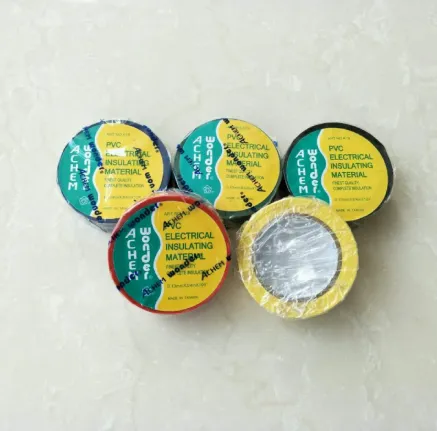When it comes to modern vehicle assembly, nothing is more critical to performance and safety than the electrical system. That’s why protecting and organizing wiring is a top priority — and where automotive harness tape comes in. Whether you're working in OEM manufacturing, auto repair, or aftermarket customization, using the right automotive wiring harness tape is key to preventing electrical failure, reducing vibration, and improving vehicle durability.

In this guide, we’ll explore the types of car harness tape, how it’s used, what features matter, and how to choose the right product for your specific needs — from engine bays to dashboards.
What Is Automotive Harness Tape?
Automotive harness tape is a specialized adhesive or non-adhesive tape used to bundle, insulate, and protect wire harnesses in vehicles. It’s designed to withstand heat, vibration, abrasion, and chemicals — all while minimizing noise (NVH: noise, vibration, harshness) and maintaining flexibility.
Wire harnesses are found throughout cars — under the hood, behind the dashboard, in doors, and along the chassis. Wrapping these with the right car harness tape improves safety, extends cable life, and makes installation easier and more organized.
Common Types of Automotive Wiring Harness Tape
Not all automotive wiring harness tape is the same. The right choice depends on where it’s being used inside the vehicle. Here are the main types:
1. Cloth Harness Tape (PET Fleece or Rayon)
Soft, flexible, and abrasion-resistant
Common in interior applications (dashboards, door panels)
Excellent for noise dampening (anti-squeak)
Heat-resistant up to 105–150°C
2. PVC Tape
Similar to general electrical tape but automotive-grade
Offers strong adhesion and flexibility
Used in dry areas or for temporary fixes
3. Fabric + Acrylic Adhesive Tape
Combines abrasion resistance with a strong adhesive
Often used for underbody or high-vibration areas
4. Aluminum Foil Tape
Offers heat and EMI shielding
Ideal for wrapping cables near heat sources or electronics
5. Non-Adhesive Harness Tape
Used in OEM assembly lines
Requires tension to self-wrap and stick
Preferred for areas where adhesives may degrade over time
Each type of car wire harness tape has a specific purpose, so choosing the wrong one could lead to cable wear, shorts, or rattling over time.
Key Features to Look For
When selecting car harness tape, here are the critical properties to evaluate:
|
Feature |
Why It Matters |
|
Temperature Rating |
Must withstand engine bay or cabin heat (up to 150°C+) |
|
Adhesion Strength |
Ensures long-lasting bonding — especially in humid areas |
|
Abrasion Resistance |
Prevents wire wear in vibrating or moving parts |
|
Noise Dampening |
Reduces squeaks and rattles, especially in interior zones |
|
Chemical Resistance |
Protects against oils, fuels, and cleaners |
|
Flexibility |
Easy to apply around tight curves and corners |
OEM specifications (like VW TL, BMW GS, or Ford ES standards) may also be required in professional automotive manufacturing.
Applications of Car Wire Harness Tape
Automotive harness tape is used throughout the vehicle in locations such as:
Engine compartments – Requires high-temperature and chemical-resistant tapes.
Interior dashboards and doors – Fleece tapes to reduce noise and vibration.
Trunks and underbody – Durable tapes that resist abrasion and moisture.
Battery and charging systems – EMI-shielding or foil tapes for hybrid/electric vehicles.
Each zone of the car presents different mechanical and environmental challenges, so always match your tape to the application.
OEM vs. Aftermarket Tapes
OEMs typically use non-adhesive or semi-adhesive tapes in assembly-line applications due to speed and automation. In contrast, aftermarket repairs and upgrades tend to favor adhesive-based car harness tape for easier, manual application.
OEM tapes:
Often require tension and heat to activate
Leave no residue when removed
Meet automaker-specific standards
Aftermarket tapes:
Easier for installers and technicians
Readily available in smaller rolls and kits
Still highly durable when sourced from trusted brands
Car Harness Tape Price Overview
The car harness tape price varies based on material, temperature rating, roll size, and certification.
|
Tape Type |
Price (Retail per roll) |
Bulk/OEM Price per roll |
|
Cloth/Fleece Tape |
$3 – $8 |
$0.90 – $2.50 |
|
PVC Electrical Tape |
$1 – $3 |
$0.25 – $0.80 |
|
Aluminum Foil Tape |
$5 – $12 |
$2 – $6 |
|
Non-Adhesive OEM Tape |
$4 – $10 |
$1 – $3 |
Buying in bulk or sourcing from factories typically cuts cost by 40–60% compared to retail.
Automotive Harness Tape FAQs
Q1: Can I use general electrical tape on a car wire harness?
A: Not recommended. Regular vinyl electrical tape lacks the heat, abrasion, and chemical resistance needed for automotive environments.
Q2: What’s the difference between cloth and PVC harness tape?
A: Cloth tape is quieter and more abrasion-resistant — ideal for interiors. PVC is cheaper and more flexible, often used in less demanding areas.
Q3: Is there a specific harness tape for EVs or hybrids?
A: Yes. EV applications may require EMI shielding, heat-rated, or color-coded (e.g., orange) harness tapes for high-voltage zones.
Q4: Can I order custom harness tape with my brand?
A: Yes. Many automotive harness tape manufacturers offer OEM services for custom branding, packaging, and roll dimensions.
Q5: How long does car harness tape last?
A: High-quality tapes, when properly applied, can last the life of the vehicle — 10 to 20 years or more depending on conditions.
-
Versatility with Tape Electrical InsulationNewsJun.09,2025
-
Floor Marking Tapes For WareHouseNewsJun.09,2025
-
Enhance Your Projects with PVC Electrical TapesNewsJun.09,2025
-
Enhance Your Projects with Automotive Wiring Harness TapeNewsJun.09,2025
-
Enhance Your Automotive Fabric TapesNewsJun.09,2025
-
Enhance Electrical Projects with Cambric TapeNewsJun.09,2025
